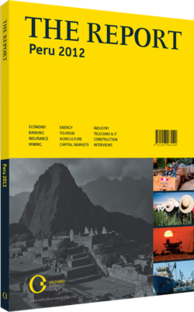OBG talks to Walter Bayly, CEO, Banco de Crédito del Perú (BCP)

Interview: Walter Bayly
How do you expect continuing global uncertainties to affect the Peruvian economy?
WALTER BAYLY: There is no way global events will not have an impact on Peru. In 2007/8 before Lehman Brothers folded, the country was growing at 9%. A year later we had zero growth. There was a huge crisis in the world, and the worst thing that happened to us was that we did not grow, so that was a good way to go through a major financial crisis. If the US enters into a serious recession in the near term, without the monetary and fiscal flexibility they had during the last crisis, the problems will last longer. If that is the case, it could affect us much more seriously, as a substantial portion of the government’s revenue comes from commodities and the income taxes raised through companies that produce these commodities. For example, if the global price of copper falls by 40% then the revenues of the government will likewise decrease.
Over the past five to seven years we have recorded budget surpluses every year. In 2012 the surplus will be 0.5% of GDP, but what is very unclear is whether we have the flexibility to bring down costs if our revenues are reduced. Government spending on infrastructure is very easy to increase, but very difficult to bring down, so a sudden drop in commodity prices will most likely create deficits for the first time in half a decade.
Will integrating the stock markets of Peru, Chile and Colombia into one market increase Peru’s exposure to external elements?
BAYLY: The three exchanges will complement each other well, as there is a great variety of commodities in our countries. A very interesting study said that if you take the parts of the Lima Stock Exchange (Bolsa de Valores de Lima, BVL) Index and add them to the Colombian and Chilean indices, you end up with a widely diverse offering, so I believe it will be very positive. Around 60% of the BVL comprises mining companies, which produce a lot of minerals that are not produced in the other countries. For example, in Chile, you do not have gold or zinc, but, you do have a lot of retail which we do not have here. In Colombia, you have a lot of oil and coal, which we do not have so much here or in Chile. The Integrated Latin American Market (Mercado opportunity to create an investment banking, trading and sales distribution platform in the three countries.
Does the MILA lessen the need to privatise Peruvian state enterprises to enrich local markets?
BAYLY: Even without the MILA, I do not think privatising Peruvian state enterprises would be necessary to enrich local markets. The MILA is not the only answer to the need to enrich our markets. Peru is in a process of financial consolidation that requires companies to start thinking of alternative ways to finance their expansion inside and outside the country. The BVL will grow because new private companies are looking for capital markets funding, not because of state enterprises.
Further floating of state enterprises is great news for the BVL, as this will force them to abide by capital markets rules and improve their reporting practices. We look forward to having as many state enterprises as possible listed. The governance, transparency and strategy would make us a much better country to invest in.
What factors might make foreign fund managers wary of investing on the BVL?
BAYLY: The BVL is a small exchange and this affects the liquidity that foreign fund managers look for when investing. We have a lot of excellent companies, with strong fundamentals and great prospects, but the lack of liquidity is a limitation. Peruvian institutional investors are in an accumulation phase and thus they have affected liquidity by having significant positions in several companies. We need to bring more firms to the market to develop a better exchange. In the meantime, we need to be able to offer new products for foreign investors. There are still a number of challenges to tackle but we are already working on several projects and products.
You have reached the limit of premium articles you can view for free.
Choose from the options below to purchase print or digital editions of our Reports. You can also purchase a website subscription giving you unlimited access to all of our Reports online for 12 months.
If you have already purchased this Report or have a website subscription, please login to continue.

